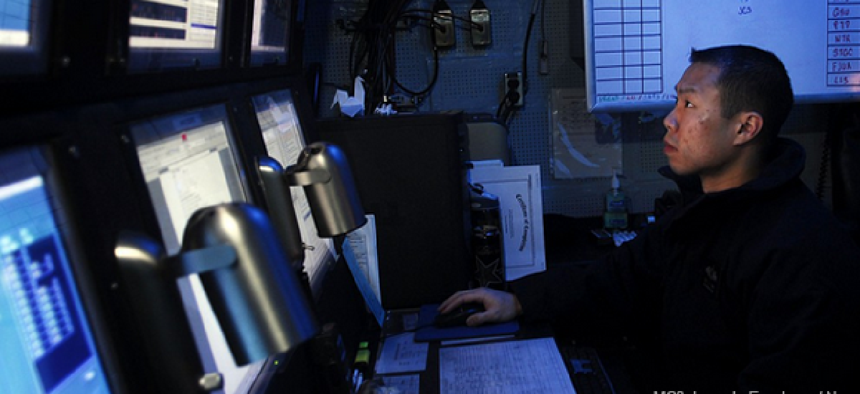Navy’s intell requires automated analytics


Connecting state and local government leaders
The Navy’s Office of Naval Intelligence is looking for automated analytics tools to help make data more accessible, discoverable and available to analysts more quickly after it is collected.
As the military’s dependence on data grows, so does the task of sifting, analyzing and sharing the vast amounts of information coming in from signals, geospatial and human intelligence sources.
In order to keep intelligence analysts from drowning in data, the Navy needs a common networking architecture, according to the commander of the Office of Naval Intelligence (ONI).
"We have multiple stovepipes across the services and even within the Navy where a platform or a sensor will collect something … and it doesn't go into a common backbone where all of the analysts who need to access it can," Rear Adm. Elizabeth Train told FCW after her appearance at a Feb. 6 conference hosted by AFCEA's Washington, D.C., chapter in Pentagon City. FCW is a sister site to GCN.
The Navy, like other military services, is trying to make the most of its ever-increasing load of data. To do that, Train said, the service is looking for automated analytics tools from the private sector to help make data "more accessible and discoverable," and to make that data available to analysts more quickly after it is collected.
The big-data challenge comes at a momentous time for the Navy's work in "information dominance," or the use of all information domains, whether cyberspace or the electromagnetic spectrum, for warfighting.
The service recently established a formal information dominance command, which Train called the last organizational hurdle to codifying "information dominance capabilities as a war-fighting domain."
Previously there was no single Navy command responsible for every field that falls under information dominance – such as cryptology, information warfare and network operations.
One of the Navy's hubs for intelligence integration is a 24/7 center within ONI for supporting global maritime missions. Intelligence, surveillance and reconnaissance (ISR) data fed into the maritime center support the Coast Guard, Drug Enforcement Administration and State Department in addition to the Navy, Train said.
In addition to that, the Navy is working closely with the National Reconnaissance Office to sort through and analyze massive sets of data for intelligence purposes.
That work is all part of Train's checklist for improving naval intelligence, challenges that are not all technological. Speaking of the need to solidify a common IT architecture for disseminating ISR data, she told FCW, "it's probably going to be a more cultural process than it is the actual hardware.”
NEXT STORY: Utah taps Google for high-res aerial imagery




